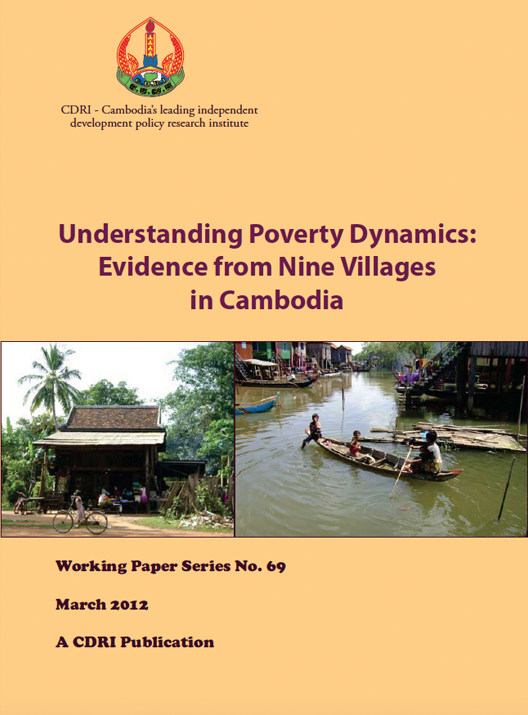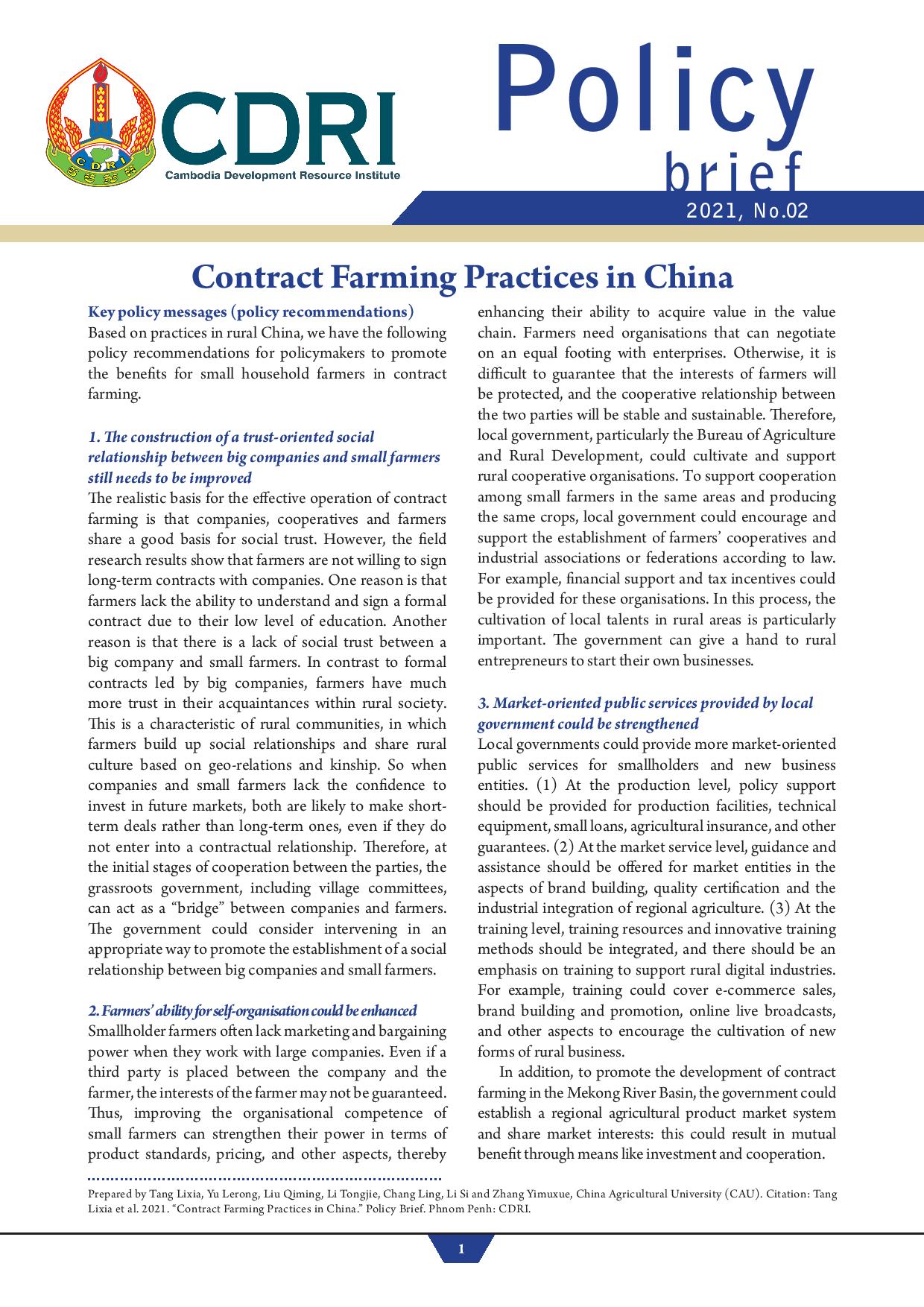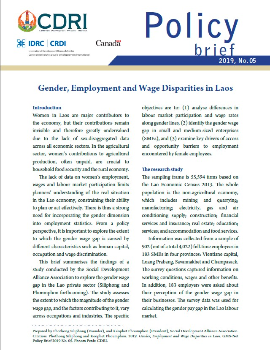
Understanding Poverty Dynamics: Evidence from Nine Villages in Cambodia
Keyword: Poverty, idiosyncratic shocks, poverty dynamics study, moving out of poverty, development
Abstract/Summary
Poverty in Cambodia
is one of the highest in Asia. Despite the country’s very impressive GDP growth
in the last decade or so, poverty remains pervasive specifically in the rural
areas. The food and economic crises along with the idiosyncratic shocks of the
recent years put the plight of the poor and near-poor at even greater risk. The
Poverty Dynamics Study (PDS), as a longitudinal monitoring exercise, helps shed
light on the extent, determinants, and nuances of the face of Cambodian poverty
against the impacts of major macro and micro developments. Employing a mixed
methods approach, the quantitative aspect involved statistical analyses of the
panel data on 897 households from nine villages representing different
geo-climatic regions in the country. This data was generated from CDRI’s Moving
Out of Poverty Study (MOPS) in 2001, the MOPS in 2004/5 and the PDS survey in
2008, with financial and technical support from the World Bank. The qualitative
aspect, on the other hand, drew upon analyses of the results of focus group
discussions (FGDs) and semi-structured interviews (SSIs) with households and
individuals from the same nine study villages. Based on the results of the PDS
presented in this report, policy recommendations have been formulated in the
hope of helping tailor the government’s poverty reduction policies and advance
their implementation.



